2024 Eisner Hall of Fame Nominees Offered – Their Comic Strip Credentials
Skip to commentsSan Diego Comic Convention (Comic-Con) has announced that the Eisner Awards judges have chosen 16 nominees from whom voters will select 4 to be inducted into the Hall of Fame this summer. These 4 will be joining the 19 individuals that the judges have already chosen for the Hall of Fame.
The 16 nominees are Gus Arriola, Eddie Campbell, Mike Friedrich, Don Heck, Klaus Janson, Abe Kanegson, Jim Lee, Mike Mignola, Tom Palmer, Bob Powell, Mike Royer, Ira Schnapp, Phil Seuling. Leonard Starr, Jill Thompson, and Angelo Torres.
Earlier this year the Judges choices for automatic inclusion into the Eisner Hall of Fame were named and The Daily Cartoonist noted half of them had comic strip credits. We will repeat the procedure with these recently named nominees for voters to choose from with, again, half of them having worked on comic strips.
Gus Arriola and Leonard Starr would be the most familiar comic strip creators from the list.
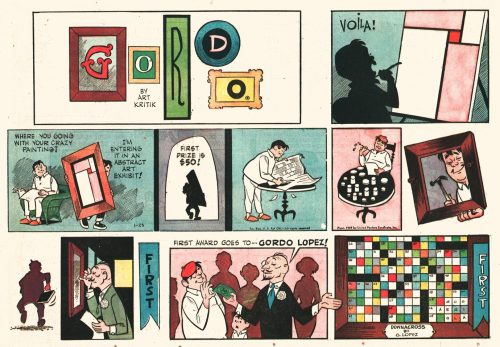
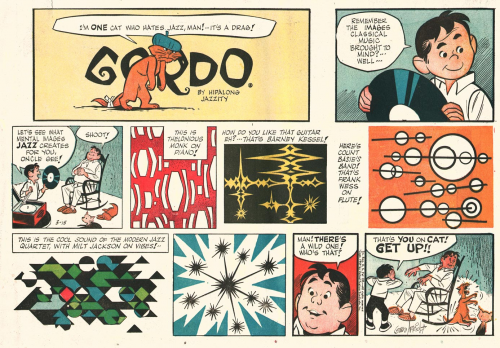
Gus Arriola created the Gordo comic strip famed for showcasing Mexican lifestyle and, as the Eisner Awards profile says, “set a high standard with its impeccable art and design and had a long and successful life in newspapers (1941–1985).”
Back in the day Gus and Gordo was one of the highlights when getting The San Francisco Sunday Examiner and Chronicle comics sections. Gordo came in The Chronicle’s tab section taking up a full page and was a can’t miss delight for the eyes and the mind.
Ger Apeldoorn has a fine selection of older and newer Dailies and Sundays from which these samples are pulled.
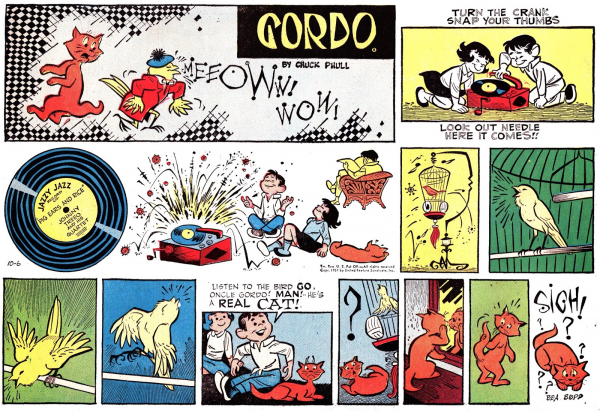
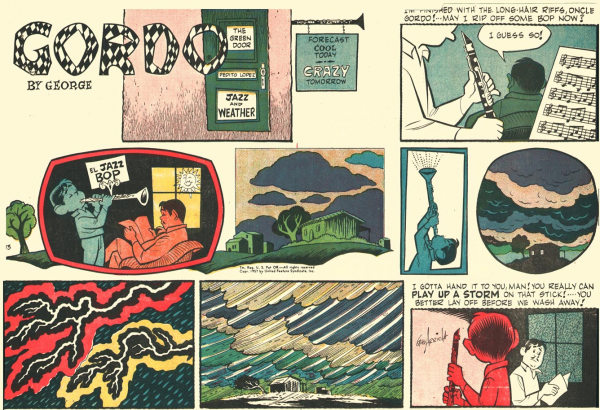
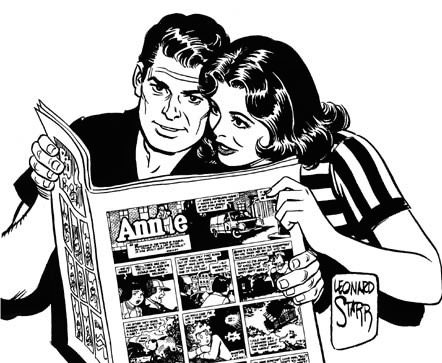
Leonard Starr spent years drawing impressive comic book art before creating Mary Perkins, On Stage. Starr was just as impressive an artist as Arriola but in a wholly different genre, he was a master of realistic comic art. Ron Goulart noted of Starr’s On Stage:
Although the adventurous soap opera strip had begun with Mary Worth in the late 1930s, it was in the late 1950s that Leonard Starr created the best-drawn and the best-written one with his Mary Perkins, On Stage.


In my opinion, the best “story” strip of the past 50 years was unquestionably Leonard Starr’s On Stage, which ran from 1957 to 1979. At its height in the 1960s, On Stage was unsurpassed by any other strip in its genre, including Alex Raymond’s Rip Kirby , Milton Caniff’s Steve Canyon, and Hal Foster’s epic Prince Valiant. Starr combined a full range of talents to produce On Stage: his drawings sparkled with his fine brushwork and his compelling use of blacks; he captured subtle facial expressions that went beyond anything his peers were doing; he employed strong compositions, his pictures were dramatically and intelligently staged, and he sure knew his anatomy. Above all Starr wrote like a dream; thoughtful, witty and as erudite as his comic page audience would permit. Starr bound all these components together into a consolidated work product that set a new standard for the genre.
Leonard retiring Mary Perkins didn’t mean Leonard retired. He continued writing and drawing for two more decades, reviving an old comic strip classic for a new audience.
The best place to enjoy Mary Perkins On Stage and Annie off stage and other Starr comic art would be the Leonard Starr Appreciation Society Facebook page. There is also the collected On Stage.
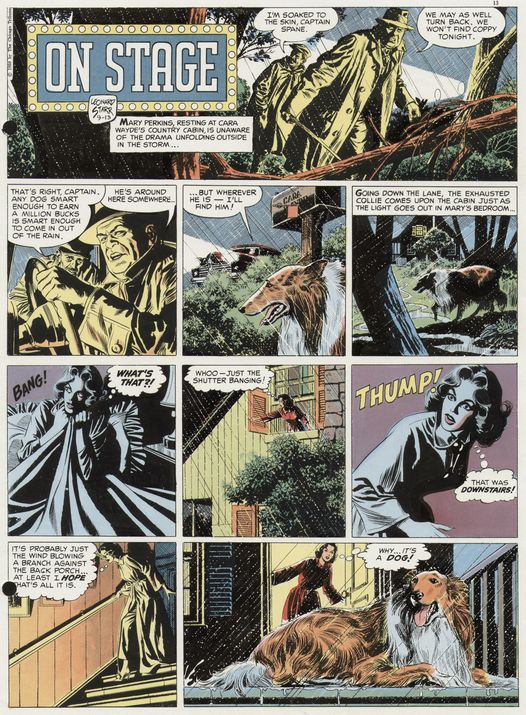
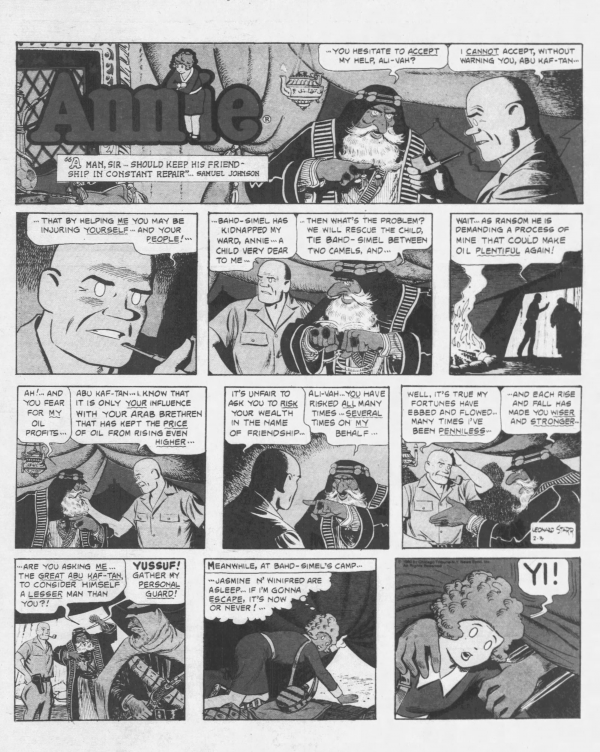
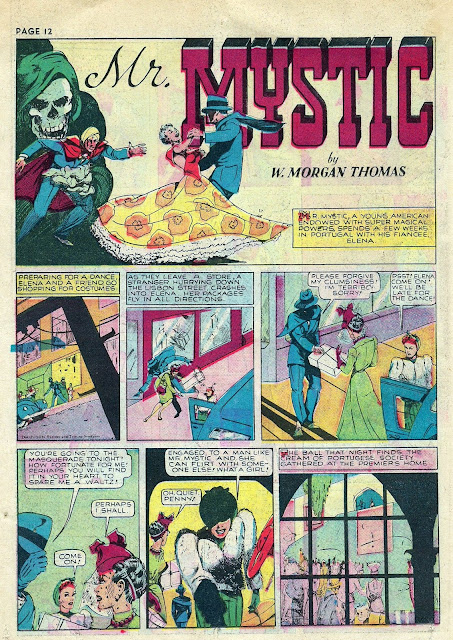
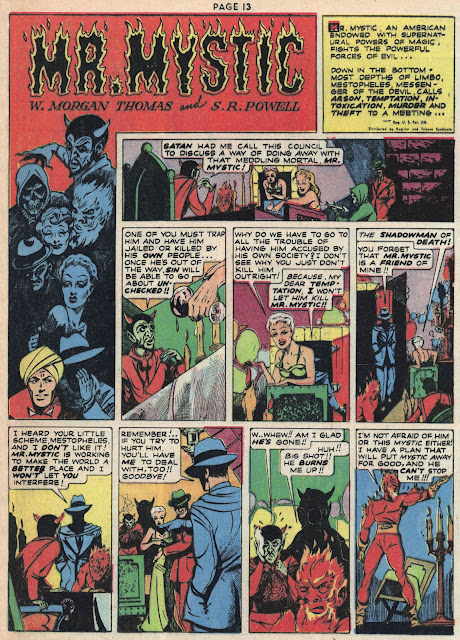
A young Bob Powell was working as a comic book artist with a young Will Eisner in the late 1930s, and when Eisner created The Spirit for Sunday newspapers Powell joined him in the production of the Weekly Comic Book. Powell’s contribution was the five page Mr. Mystic feature that ran in the 16 page newspaper insert from 1940 to 1944. Bob Powell continued his comic book contributions during and after his Mr. Mystic duties.
Powell returned to newspapers in 1960 when he took over the art chores of the Bat Masterson comic strip. Unfortunately the western strip, that began in 1959, didn’t make past the half way mark of 1960.


Powell tried the newspapers once more with Teena A Go Go about a typical teenage girl. Bob Powell, nearly 50 at the time, was described in promotional material as one of “two specialists on the teen scene.” The strip would run from Summer of 1966 (August 15) to Spring of 1967 (April 16).
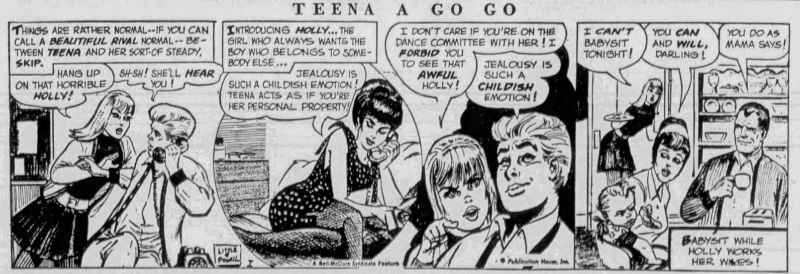

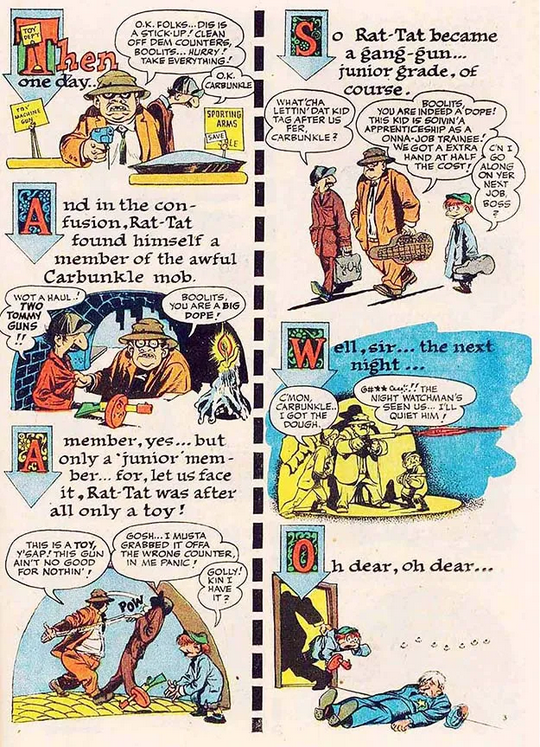
Abe Kanegson bring us back to Will Eisner and The Spirit Section, but a few years after Bob Powell and this time working directly on The Spirit feature. From 1947 to 1950 Abe was what Jules Fieffer called:
… utility infielder at the office: he lettered, he inked backgrounds, he finished inking Eisner’s half-finished figures.
“He was the best letterer I ever had. He worked with me from 1947 to about 1950. I don’t know what happened to him after that, but I miss him sorely. He brought far more to The Spirit than many of the background people ever did — he was very responsive to ideas and he added a creative dimension to comics, which I always thought was important. He’s the only one who ever really understood. I had other letterers before he came in, but he helped me reach out. Sure, I had certain standards I wanted him to follow—for instance, I did Old English before he came in, but he would take that Old English and really do it — his skill was enormous — even more, he understood the function of lettering in comics. He regarded it as something important. Everybody before him regarded it as a chore.”


Letterer Ira Schnapp spent the better part of three decades working for DC Comics, the last two decades on staff. He worked as letterer and designer for other concerns for two decades before getting comic book work in 1940. He even created a newspaper feature (not comic) prior to his comic book employment. Todd Klein covers Ira’s entire career, but we’ll stick to his comic strip lettering. – which naturally started with the newspaper Superman.

From 1943 to 1966 Todd Klein tallies that Ira lettered 6,696 daily strips and 1,083 Sunday pages.
Ira also helped letter the Batman and Robin comic strip from 1944 to 1946. And a short stint on Dondi.

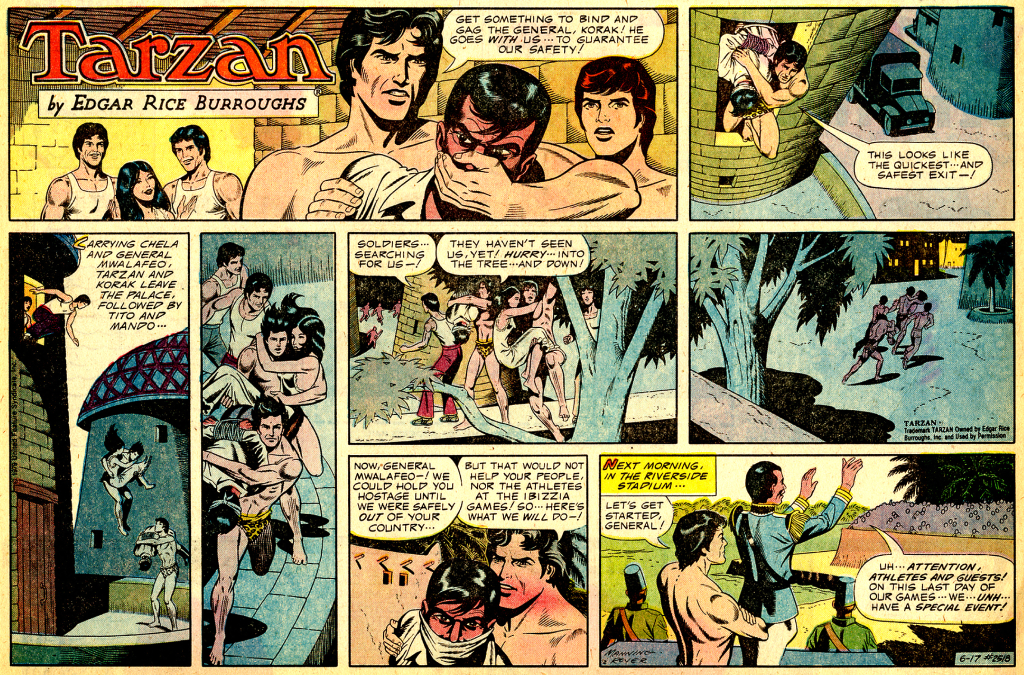

Mike Royer entered both professional comic books and comic fanzines in the 1960s and before man set foot on the moon he was art assisting Russ Manning’s comic book and comic strip work. The comic strip was Edgar Rice Burrough’s Tarzan. He took a break from Manning to ink Jack Kirby DC comic books and other assignments. Mike returned to Tarzan in the late 1970s and stayed until the end of Manning’s run in 1979, co-signing the last six months (some credit him with complete art on the last two (June 17, above, and June 24, 1979). During that time Mike also assisted Manning with the first four months of the Star Wars comic strip (began March 1979).

Royer left Manning to begin a 14 year staff job at Disney, and before 1979 was over we saw Mike back in space inking Jack Kirby on the comic strip adaptation of The Black Hole.


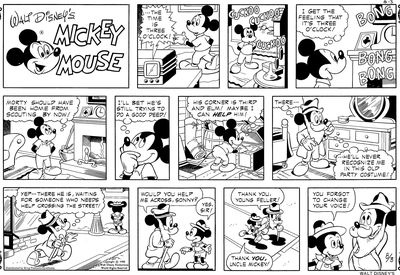
Mike’s Inducks bibliography has him drawing a few Mickey Mouse Sunday pages in 1980 (above) and inking more in 1981. Around that time he also inked a few Disney Christmas Strips – Madam Mim’s Christmas Grudge (1979), Santa’s Magical Christmas Helpers (1980), and Cruella’s Very Furry Christmas (1985).

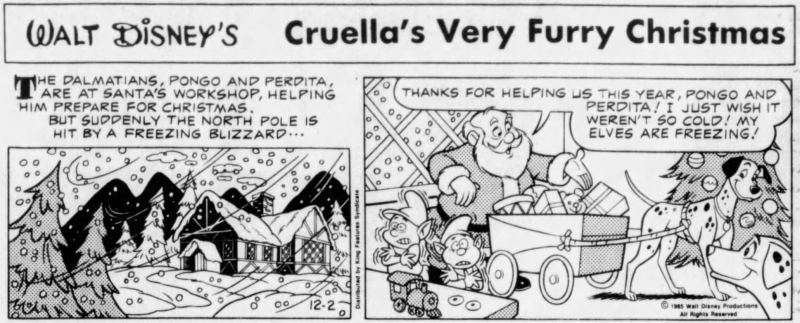

Don Heck spent his career in comic books. He excelled in adventure, suspense, and war comics in the 1950s and when Marvel (then Atlas) reopened shop in 1958 Don was on Stan Lee’s shortlist to call back into the “bullpen.” The superhero explosion of the 1960s saw Don star on Iron Man, Thor, The Avengers, and most of the other Marvel heroes at one time or another. The 1970s and 1980s saw Don split his time with DC Comics too with Batgirl, Wonder Woman, love comics, and many others.
But for a brief time (some date it as 1966-1971, others as 1972-1978) he helped artist Sy Barry on The Phantom.
The Chronicle Chamber examines what appears to some of the strips Don assisted on.
After some research between Australian Phantom artist Shane Foley and myself we have found out more about another Sy Barry assistant in Don Heck who is credited as a ghost artist/penciller possibly between the years 1966 to 1978 along with some examples of his work coming through the final inked newspaper published versions.
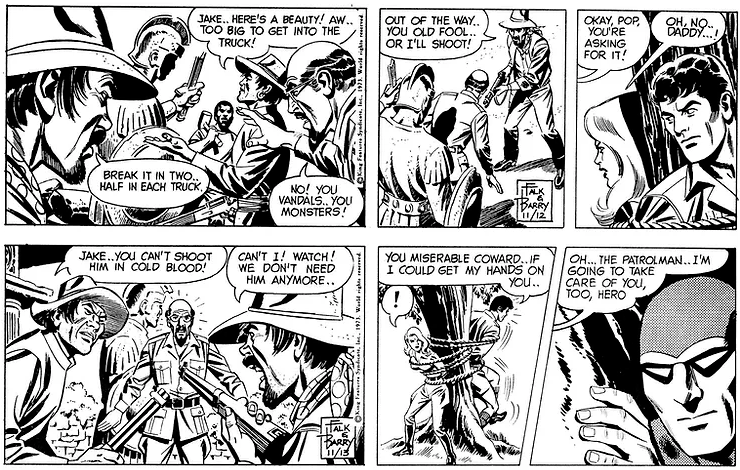
It would really be a nice bit of karmic satisfaction/justice to see Don Heck
entering the Eisner Hall of Fame at the same time as Gary Groth.


Comments 2
Comments are closed.